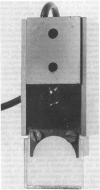Abstract
The pecking response of pigeons is usually measured by a transducer that senses the presence or absence of a response. Typically, the response force as a function of time has not been accurately measured. Data were collected using a transducer specially designed to record the waveform of the pecking response in pigeons. Each response on the target surface of the transducer was reinforced and followed by a blackout. The response was stored on an oscilloscope screen and the peak force and duration of the response were recorded manually from the oscilloscope screen. The mean peak force of the response substantially exceeded the minimum criterion for reinforcement of 35 g (0.343 Newtons) of force. Photographs of the waveform of pecks on the transducer showed great variability in response force and demonstrated that the waveform produced by pecking the target surface was complex. The responses were frequently asymmetrical with the rise time shorter than the fall time, although no single verbal description could be applied to all of the waveforms. Bimodal peaks and double responses were observed and the first peck or response was usually larger than the second. A disadvantage of the transducer was that pecking produced oscillation of the transducer at its resonant frequency. In spite of this deficiency, the waveform of the peck was easily recognizable.
Full text
PDF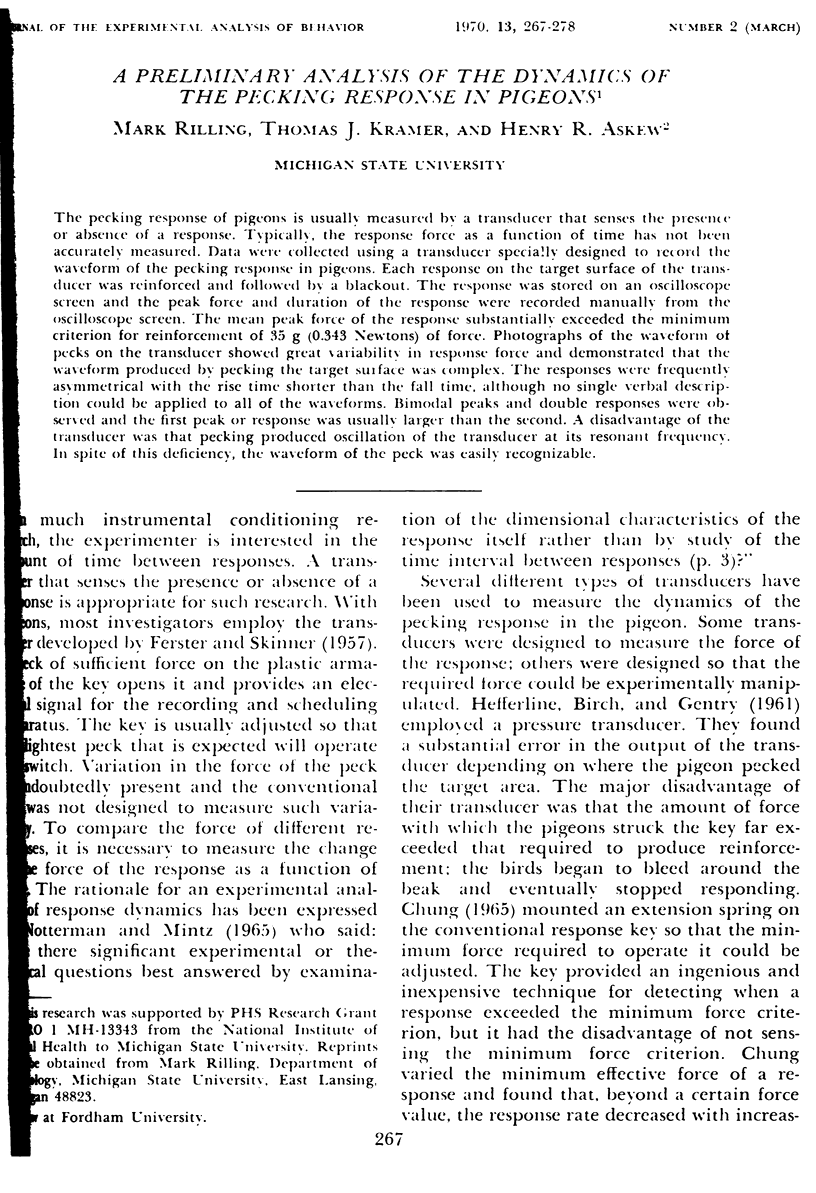
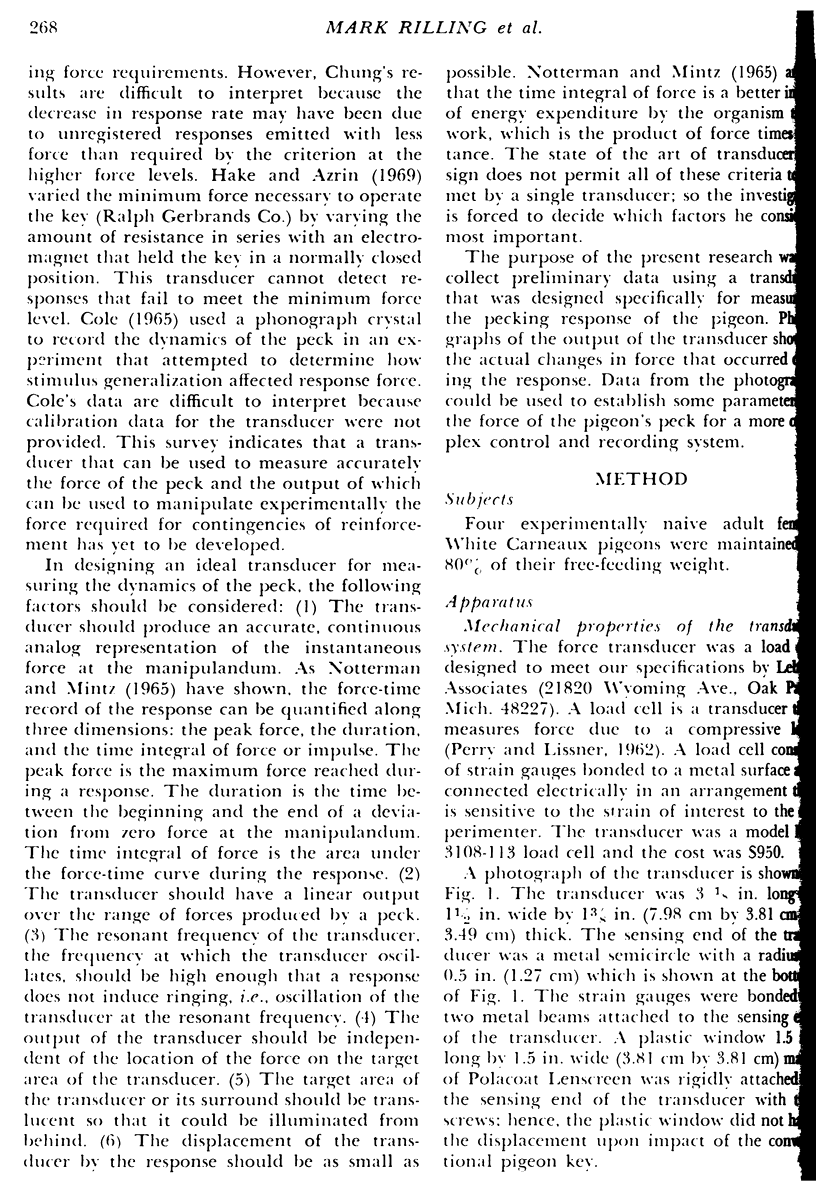
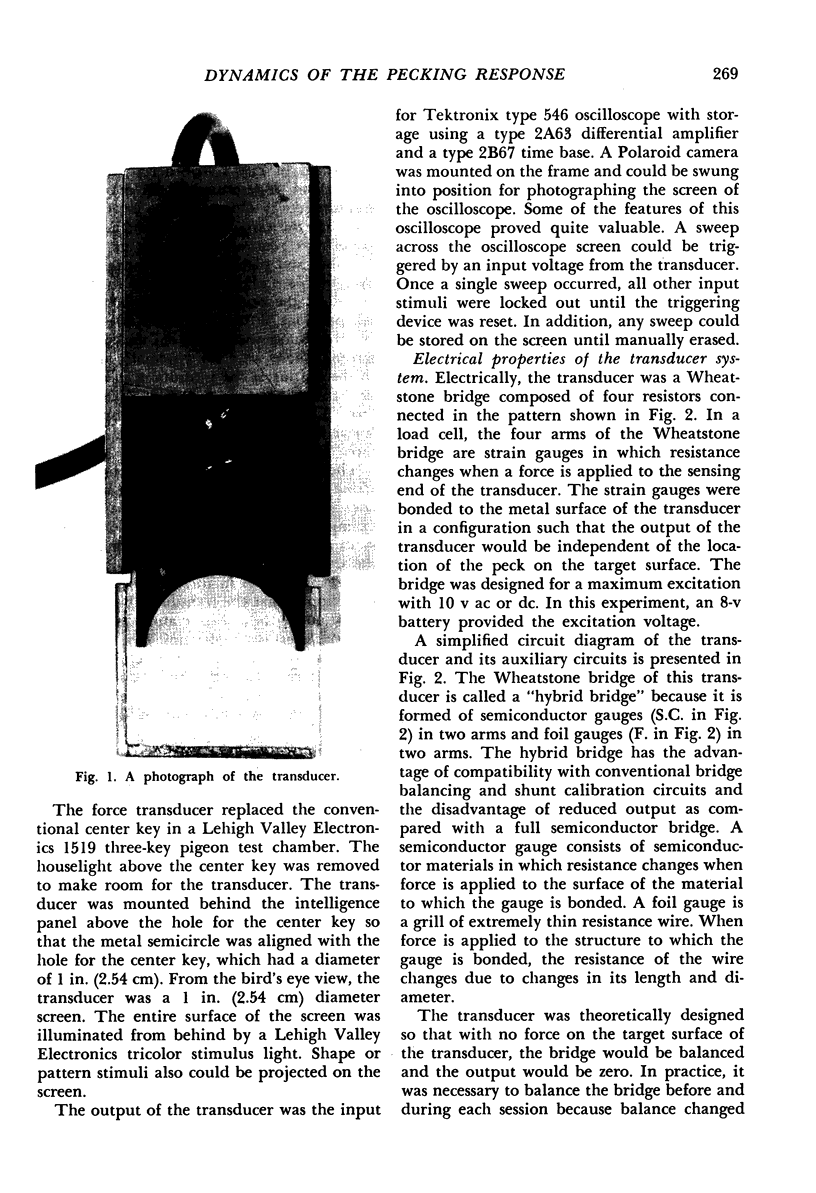
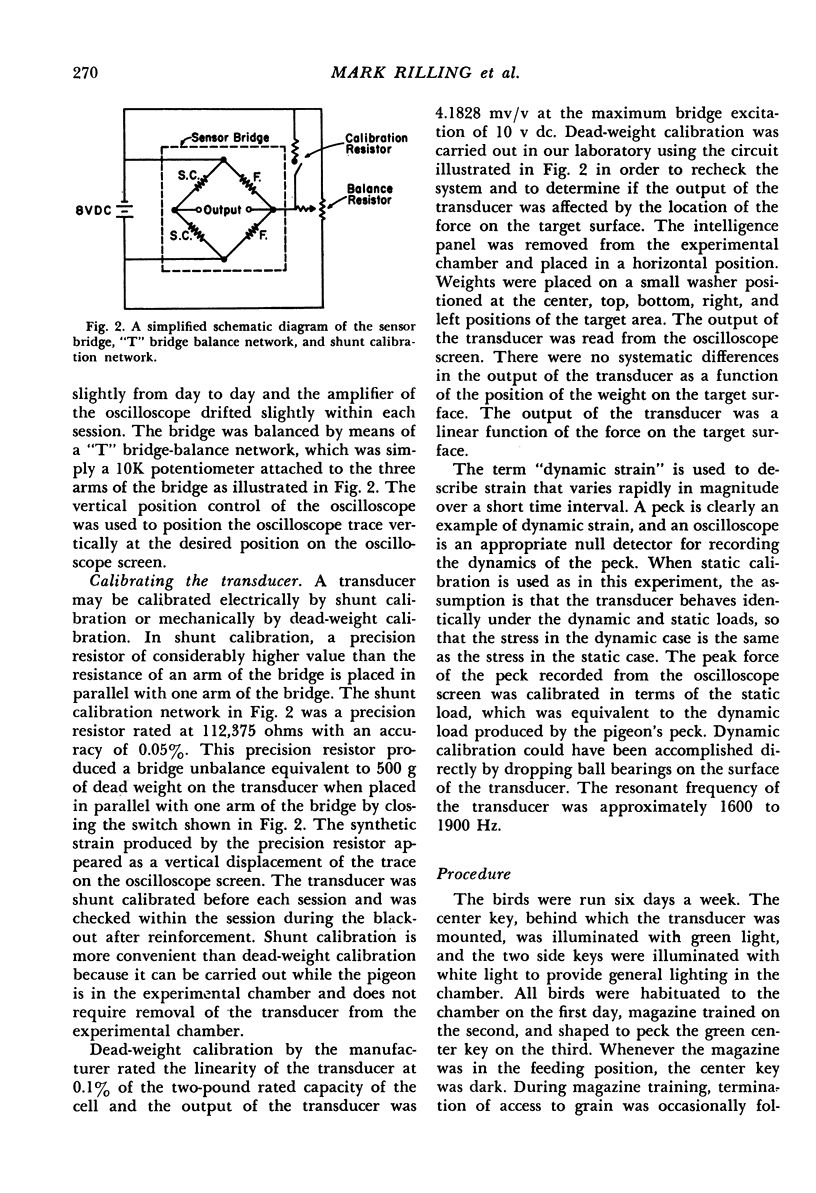
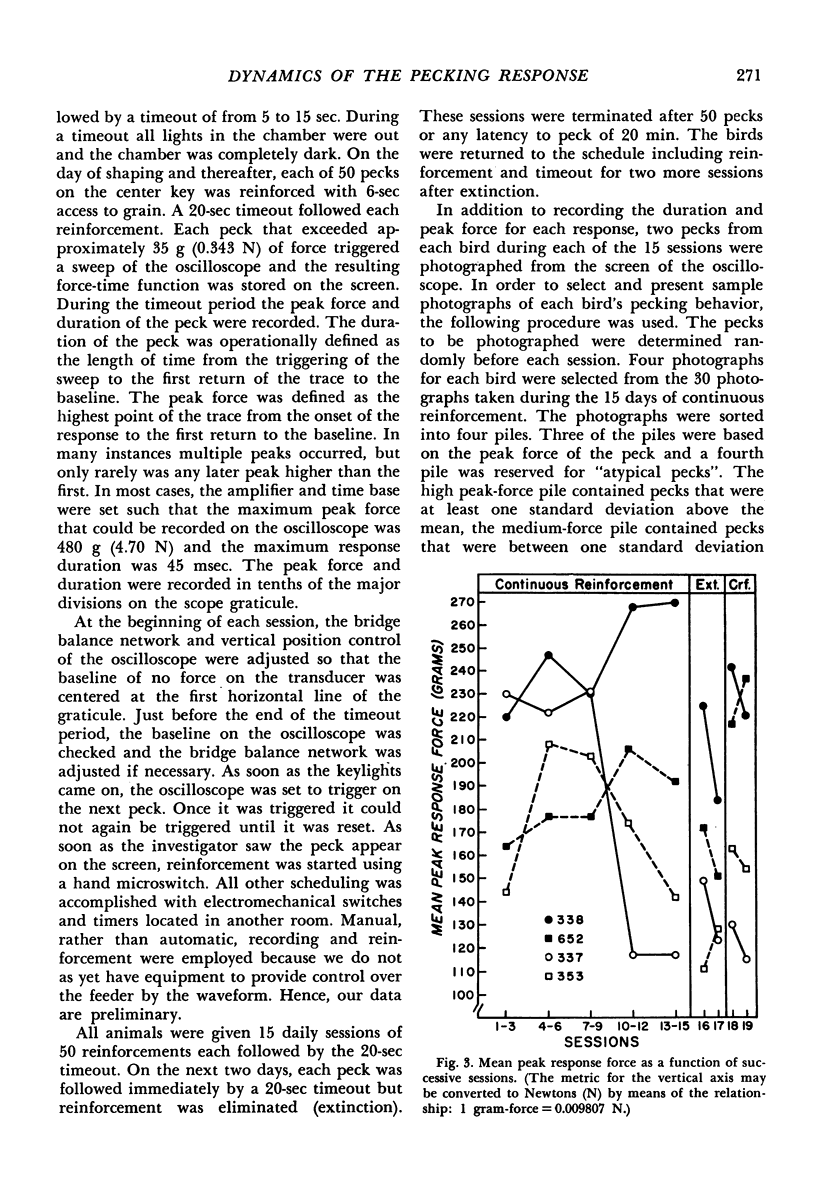
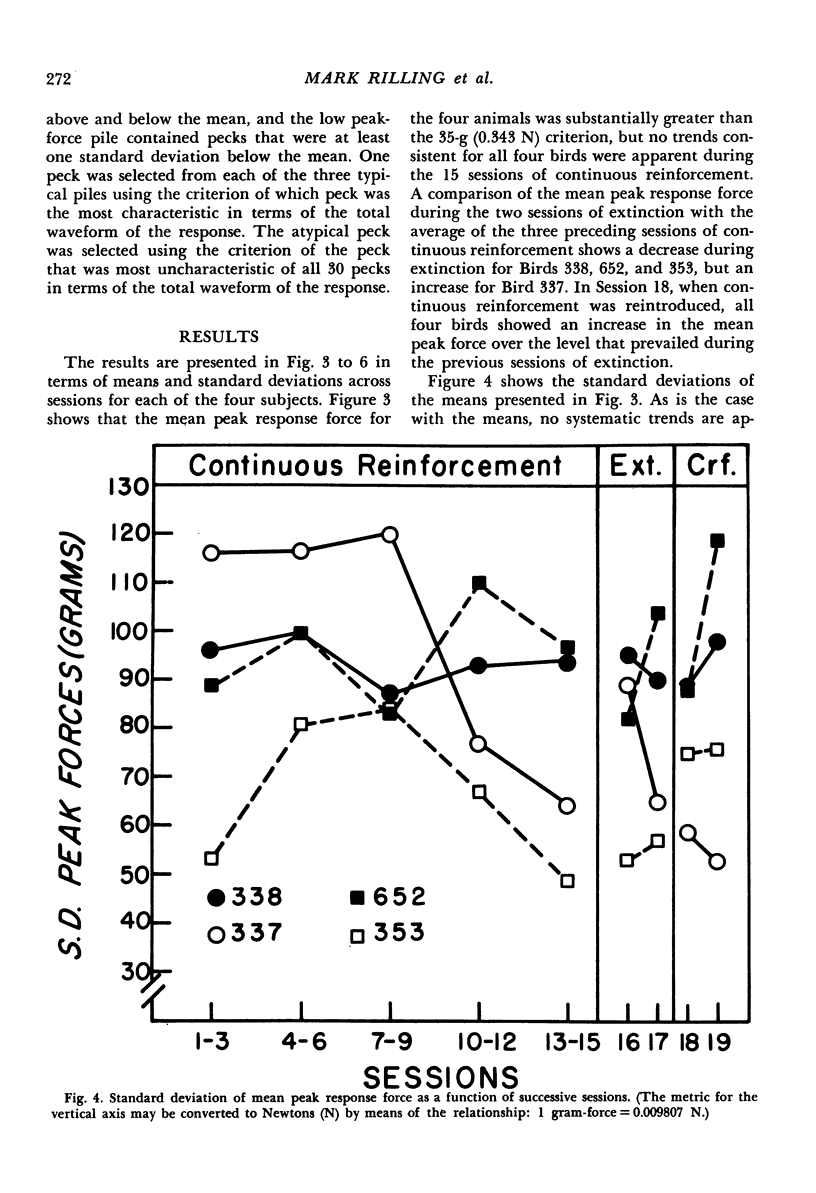
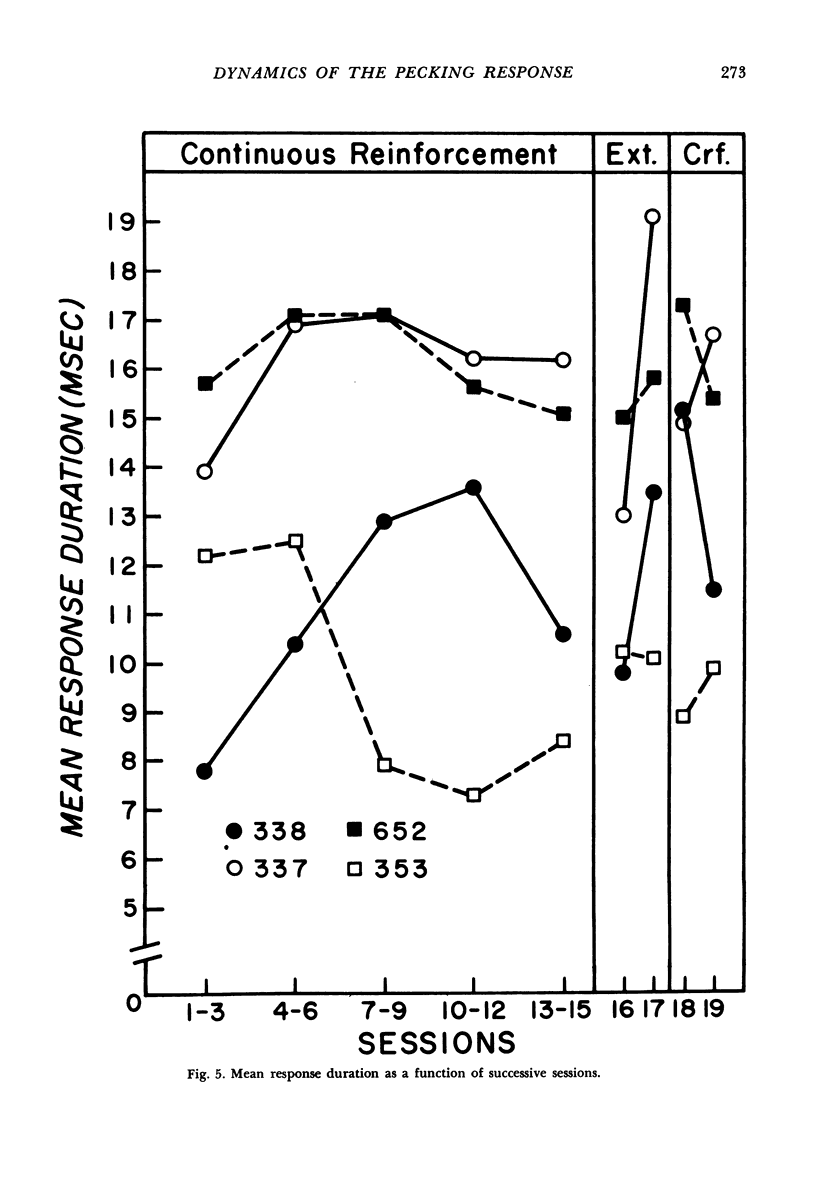
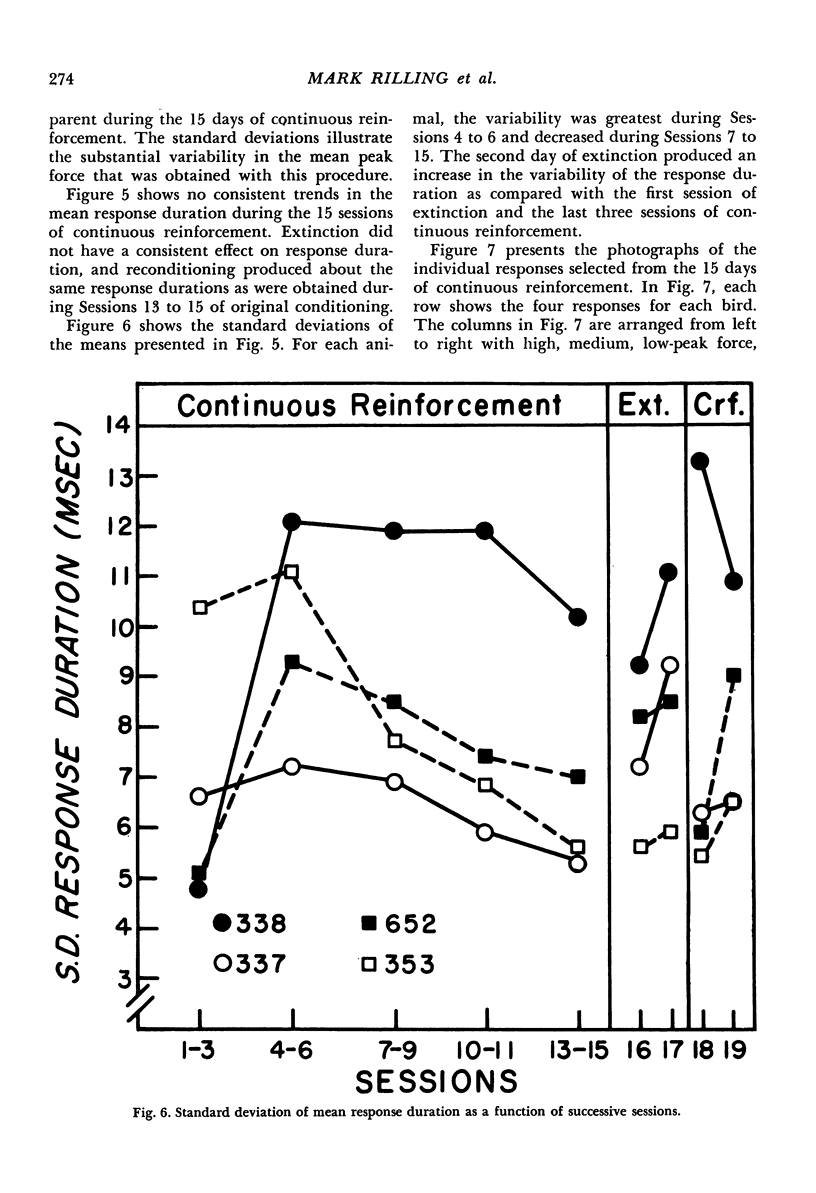
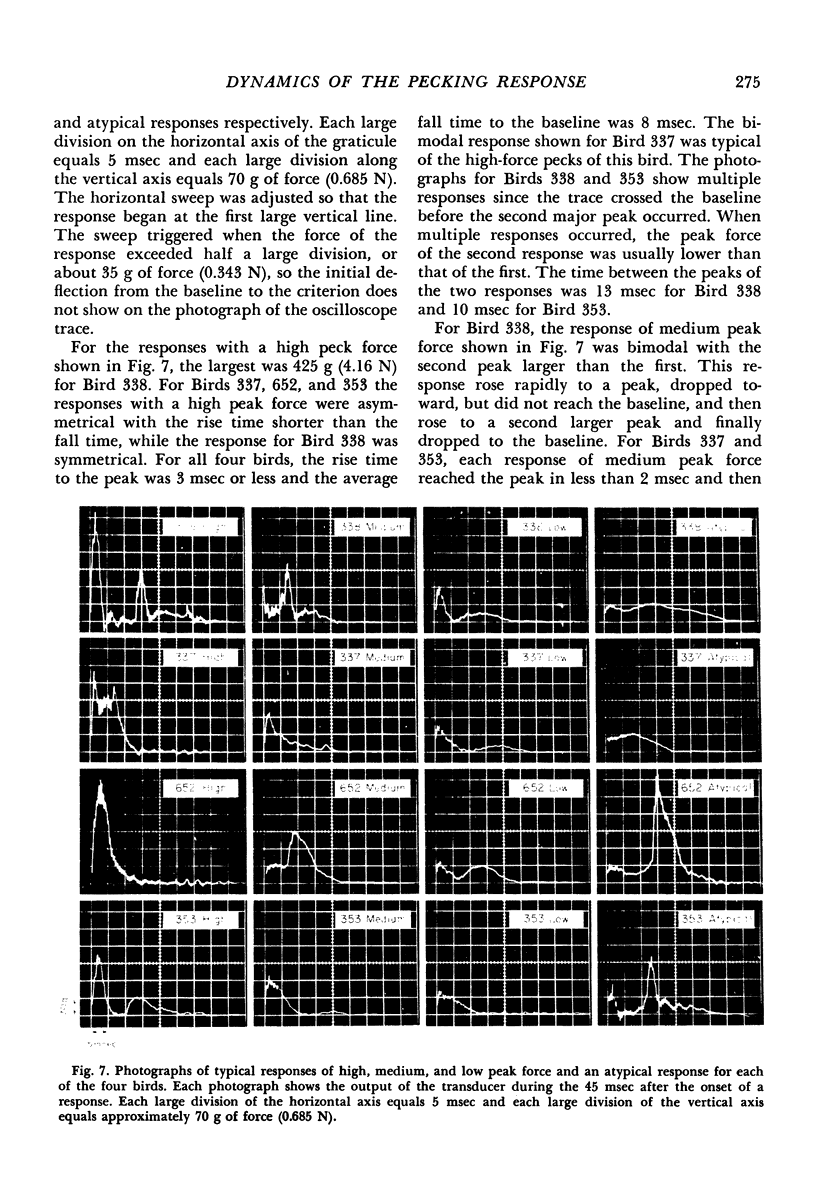
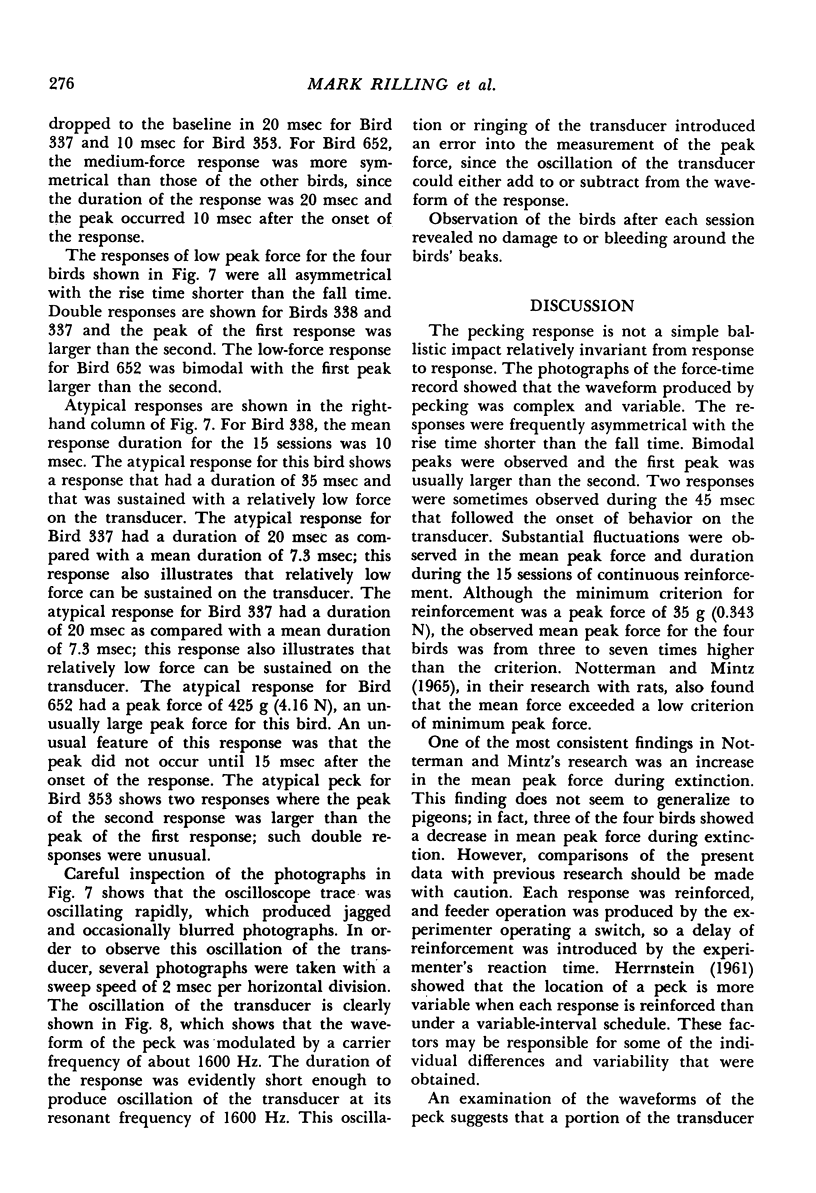
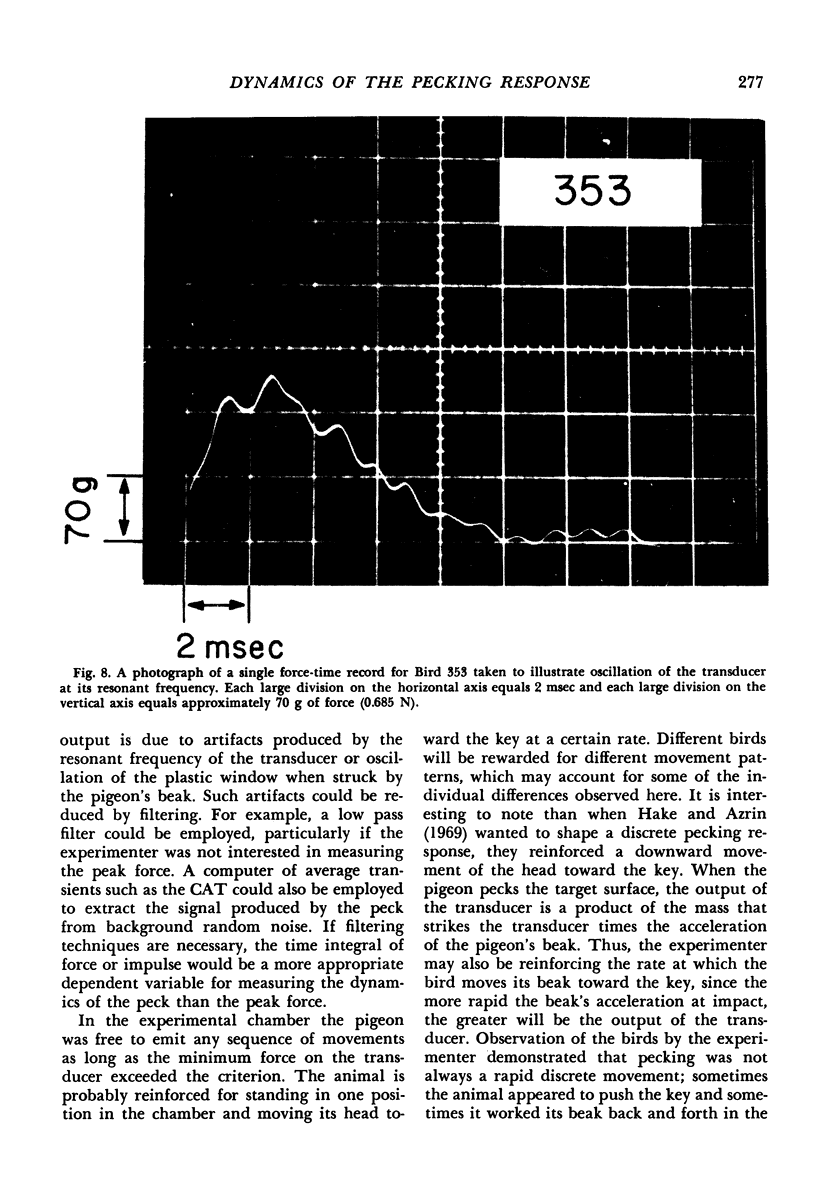
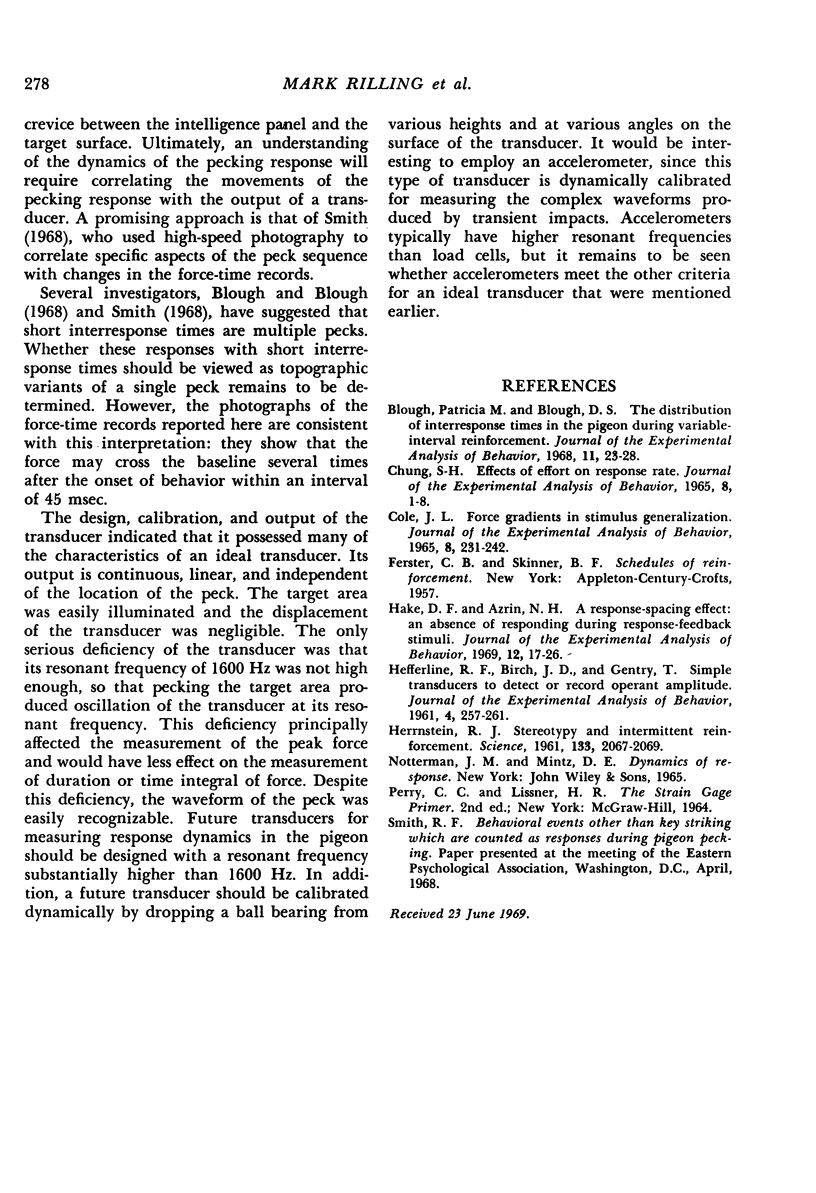
Images in this article
Selected References
These references are in PubMed. This may not be the complete list of references from this article.
- CHUNG S. H. EFFECTS OF EFFORT ON RESPONSE RATE. J Exp Anal Behav. 1965 Jan;8:1–7. doi: 10.1901/jeab.1965.8-1. [DOI] [PMC free article] [PubMed] [Google Scholar]
- COLE J. L. FORCE GRADIENTS IN STIMULUS GENERALIZATION. J Exp Anal Behav. 1965 Jul;8:231–241. doi: 10.1901/jeab.1965.8-231. [DOI] [PMC free article] [PubMed] [Google Scholar]
- HEFFERLINE R. F., BIRCH J. D., GENTRY T. Simple transducers to detect or record operant amplitude. J Exp Anal Behav. 1961 Jul;4:257–261. doi: 10.1901/jeab.1961.4-257. [DOI] [PMC free article] [PubMed] [Google Scholar]
- HERRNSTEIN R. J. Stereotypy and intermittent reinforcement. Science. 1961 Jun 30;133(3470):2067–2069. doi: 10.1126/science.133.3470.2067-a. [DOI] [PubMed] [Google Scholar]



